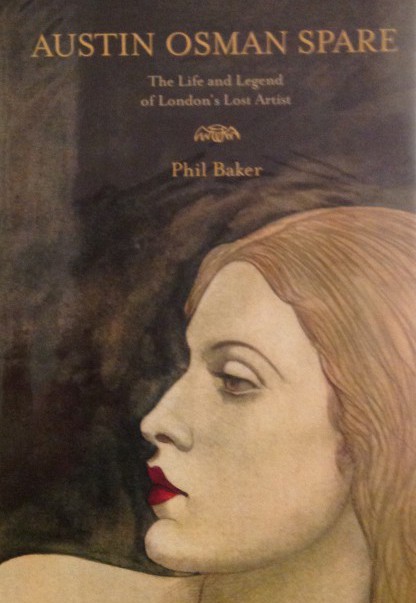Inspiring Older Readers
 posted on 17 Nov 2016
posted on 17 Nov 2016
Austin Osman Spare : The life and legend of London’s lost artist by Phil Baker
Some people seem to live their fame backwards, if you see what I mean. Austin Osman Spare burst onto the London art scene at the start of the 20th century as a fully formed enfant terrible, became the sensation of the time and then slowly fell out of the public eye. He died in the mid-1950s known to only a few aficionados who did what they could to help him and to preserve his reputation. What Phil Baker has done with this book is to not only place Spare’s name back onto the cultural landscape but to try and explain how this meteor burned so brightly across the sky only to disappear from view little more than a decade after reaching his zenith.
Spare was a working class, Cockney artist who was to all intents and purposes largely self-taught. He did attend the Royal College of Art in Kensington but never graduated – the RCA at this time had the unenviable reputation of being the worst art institution in the country and clearly did very little for a talent as outrageous and precocious as Spare’s. Instead he plunged himself into the Decadent and Symbolist art scene that was flourishing in the first decade of the century and his drawing reflected the influence of the Pre-Raphaelite Brotherhood, Aubrey Beardsley and G.F. Watt, the latter being his great hero. Two things fascinated the art critics and public of the day: his astonishing and undeniable skill as a draughtsman and his association with magic and alternative philosophies.
This was the great age of Alistair Crowley, flirtations with the afterlife, séances and a fascination with magic and even Satanism. Established and highly respected figures from the world of the arts found themselves drawn into this world and the over-ripe, sensuous and melancholic became the fashionable pose of the day. Spare not only adopted all of this but went even further – he distanced himself from the charlatans and began to develop his own quasi-religious mythology.
By the time the First World War was over the public and the art world were showing signs of moving on – something Spare wasn’t really interested in. Despite marrying he found himself spurning financial reward in favour of staying true to his art and to his visions – which Baker here compares to the sort of visionary commitment made by someone like William Blake.
By the 1930’s Spare had slipped from popular view and, following divorce, found himself in increasingly straightened circumstances and on an inevitable path towards a life of semi-squalor. Periodical changes in his painting style and the occasional individuals determined to champion his cause did little to rehabilitate his reputation which by this point had become entwined with the stories of magic, ambiguous and intemperate sexuality and a need to evangelise his increasingly bizarre world view.
In a final chapter to this book, Phil Baker reviews the more recent attempts to revive Spare’s reputation fifty or more years after his death in 1956 from complications arising from a burst appendix. Attempts have been made to make out a case for him being the godfather of the Surrealists but that seems a very tenuous given Spare's own evident dislike for that school of art. He was undoubtedly interested in the emerging science of psychoanalysis and the unconscious but, as Baker himself notes, Spare’s grasp of these ideas was nothing much more than superficial.
In the end, everything about Spare and his life screams cult interest and that has pretty much been what has kept his name alive – his work is, for example, collected by Jimmy Page of Led Zeppelin – and it has to be acknowledged that much current day interest in him is less about his art than about his associations with magic and the salacious stories that always accompany those who take up residence in the palace of excess.
Before picking up this book I knew nothing of Spare and this highly readable volume has given me a vibrant introduction but I couldn’t help but feel that despite the impressive parade of evidence that he was an outstanding artist in a technical sense, the ideas that underpinned his art were just plain daft and more than a bit irritating.
This book is pretty hard to find and distressingly expensive to buy in hardback. However, paperbacks are available and you might pay anything from about £10 upwards. The publisher is Strange Attractor Press.
Terry Potter
Novemberr 2016